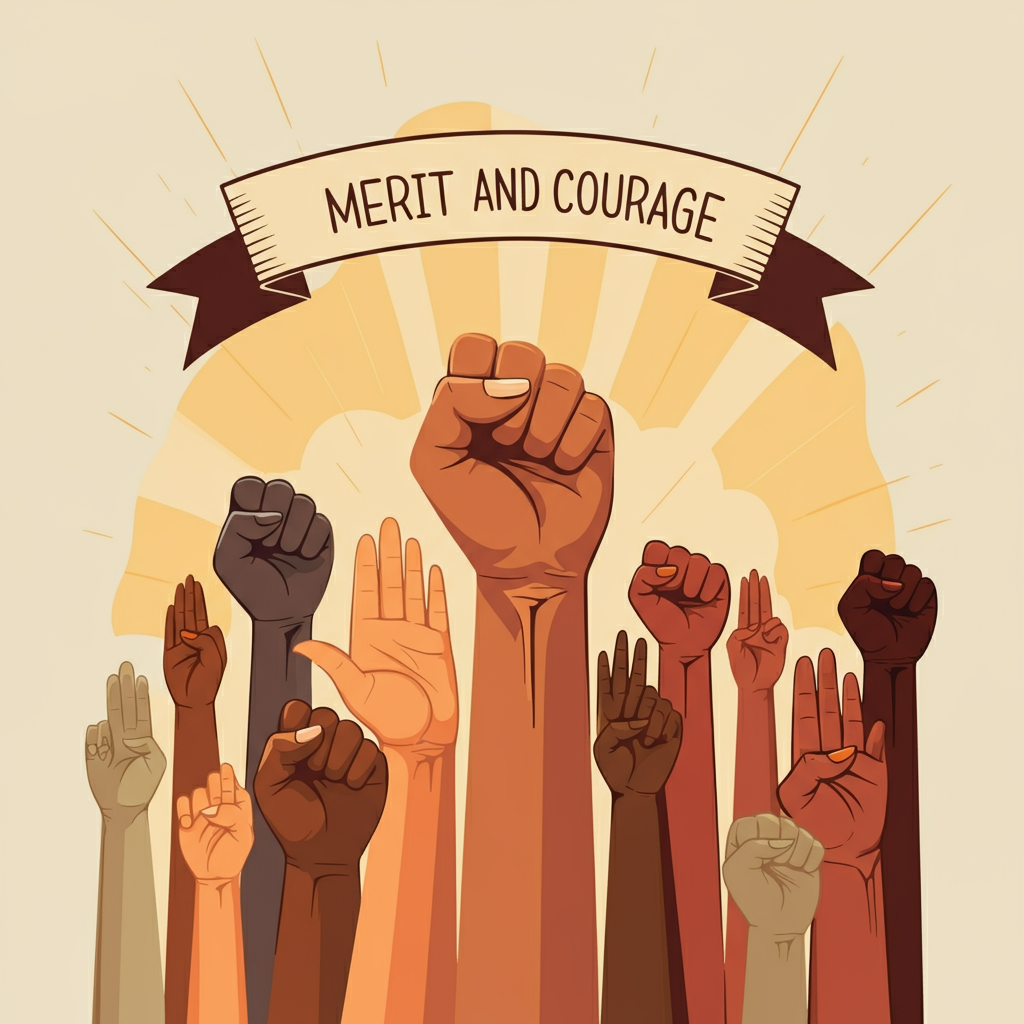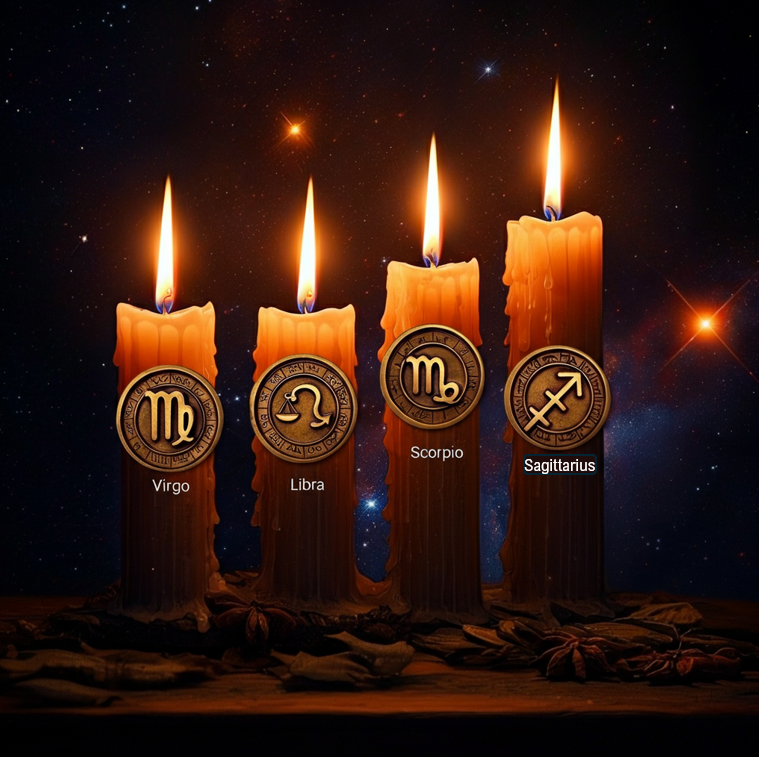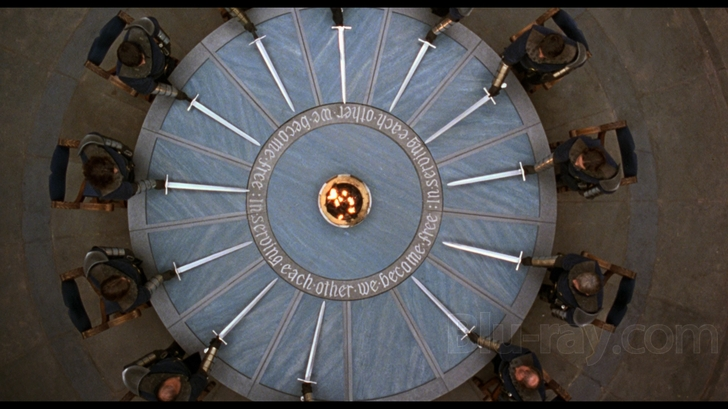A Rebuttal to the Anointment
of Donald Trump as a Messiah
The anointment of Donald Trump as a Messiah by some US Evangelicals raises serious theological and ethical questions. While they present arguments supported by isolated Biblical references, a deeper exploration of scripture reveals significant contradictions in this claim. Below are key rebuttals grounded in Biblical principles and Christ’s teachings:
The Ten Commandments and the Worship of Truth
The first commandment unequivocally states, “You shall have no other gods before me” (Exodus 20:3). This is a direct call against idolatry, which includes elevating any human being to a divine status. By anointing Trump as a Messiah, evangelicals risk creating an idol. The true call of faith is to worship not a person, but the embodiment of divine truth, justice, and love. Assigning Messiah-like qualities to any political figure distorts this fundamental tenet, replacing God with human fallibility.
Confirmation Bias and Misuse of Scripture
One of the serious pitfalls of this movement is the use of confirmation bias—cherry-picking scripture to justify a preconceived narrative. This approach allows almost any belief, however flawed, to find Biblical “support.” For instance, while King David might serve as a precedent for flawed leaders chosen by God, David’s repentance and humility before God were central to his role. The Bible cannot be wielded as a weapon of selective interpretation; it must be read in full context, lest it becomes a justification for actions and beliefs that stray far from its teachings.
Evil as Stagnation in Selfishness and Separateness
Evil, in its essence, is a clinging to immature states of consciousness like selfishness, division, and the prioritization of ego. Supporting cruelty, exclusion, or the perpetuation of inequality reflects such immaturity. Trump’s polarizing rhetoric and policies often amplify separateness rather than unity—a disposition antithetical to spiritual growth and the divine call for compassion and reconciliation. To align these behaviors with the divine is to misunderstand the progressive, inclusive nature of spiritual evolution outlined in scripture.
Christ’s Message of Love and Compassion
Central to Christ’s teachings is the commandment to love your neighbor as yourself (Mark 12:31) and even to love your enemies (Matthew 5:44). Yet, the support for Trump often celebrates his animosity toward perceived adversaries and his harsh stance on immigrants and marginalized groups. Christ’s ministry was a radical proclamation of compassion, seen repeatedly as He healed the sick, fed the hungry, and welcomed the stranger. Policies or rhetoric that promote division, cruelty, or hatred starkly contradict His essential message.
Christ Was Neither a Capitalist nor a Lover of Money
Unlike Trump’s image as a businessman and self-proclaimed billionaire, Christ warned against the perils of wealth. “No one can serve two masters… You cannot serve both God and money” (Matthew 6:24). His temple-clearing anger at the money changers (Matthew 21:12-13) further cements His opposition to the exploitation and greed that often accompany capitalism. Trump’s fortune and business-focused narrative stand in stark contrast to the humility and simplicity Christ embodied.
Prioritization of the Poor
Throughout His teachings, Christ consistently placed the needs of the poor above the desires of the rich. Consider the Beatitudes, where He proclaimed, “Blessed are the poor in spirit, for theirs is the kingdom of heaven” (Matthew 5:3), or His admonition to the rich man to sell his possessions and give to the poor, “and you will have treasure in heaven” (Matthew 19:21). Trump’s policies, which often favor the wealthy, contradict this central priority of Christ’s ministry.
Concluding Thoughts
The anointment of any political leader as a Messiah represents a profound misunderstanding of both scripture and Christ’s mission. The figure of Christ cannot be co-opted to validate policies or rhetoric rooted in division, materialism, or cruelty. If modern evangelical rhetoric truly seeks to follow Christ, it must eschew the idolization of any flawed human figure and return to the unambiguous call for love, humility, and justice.
And while some may argue that Trump’s actions align with God’s will, perhaps we should extend such creative theological application further. Shall we then suggest awarding Pontius Pilate for his “decisive leadership” during Christ’s trial? Or perhaps propose a Nobel Peace Prize for bringing tranquility to tumultuous political waters by such divisive means? The irony speaks for itself. Faith must remain rooted in truth—not political expediency.
Invited Essays
Would Christ Advocate for Democratic Socialism Today?
While the socioeconomic systems of today did not exist in His time, Christ’s teachings and actions offer a framework that resonates strongly with the core principles of democratic socialism. From His advocacy for the poor and marginalized to His warnings against the dangers of wealth, Christ emphasized compassion, community, and a fair distribution of resources—values at odds with the competitive, profit-driven nature of unregulated capitalism.
Christ’s Teachings on Wealth and Resource Sharing
At the heart of Christ’s message is a profound concern for the less fortunate. Repeatedly, He calls on His followers to assist the poor, care for the vulnerable, and reject the accumulation of wealth as a life goal. Consider the story of the rich man, to whom Christ said, “Go, sell your possessions and give to the poor, and you will have treasure in heaven. Then come, follow me” (Matthew 19:21). This directive is not just an ethical guideline; it is a complete rejection of hoarding resources for personal gain at the expense of others.
Such teachings align naturally with the principles of democratic socialism, which prioritize the equitable distribution of wealth and the provision of basic needs like healthcare, education, and housing for all. Under capitalism, by contrast, wealth often concentrates in the hands of a few, leaving millions in poverty despite living in societies of abundance. Christ’s parable of the sheep and the goats (Matthew 25:31-46) emphasizes that true righteousness is found in feeding the hungry, sheltering the stranger, and caring for the suffering. These acts are not optional but central to Christian life. Democratic socialism institutionalizes these values, ensuring that collective resources are used to uplift the most vulnerable.
Community Over Competition
Christ’s vision of a just society was inherently communal. The early Christian church, as described in the Book of Acts, is perhaps one of the most explicit Biblical models of democratic socialism. The believers “shared everything they had. They sold property and possessions to give to anyone who had need” (Acts 2:44-45). This voluntary sharing ensured no one among them suffered from want. While this early church model was not identical to modern economic systems, its spirit—placing communal well-being above individual wealth—mirrors the goals of democratic socialism.
Capitalism, on the other hand, thrives on competition and the pursuit of self-interest. While proponents argue that this system drives innovation and growth, it often comes at the cost of widening inequality and exploitation. Christ’s teachings reject such hierarchies, calling instead for a leveling of human value. “The last will be first, and the first will be last” (Matthew 20:16) undermines the capitalist tendency to reward only the most competitive, reinforcing the idea that all should have access to abundance, regardless of their position in society.
Compassion and Care as Central Pillars
Democratic socialism emphasizes policies rooted in compassion—universal healthcare, affordable housing, accessible education, and workers’ rights. These principles align seamlessly with Christ’s ministry, which revolved around healing the sick, feeding the hungry, and liberating the oppressed. When Christ fed the five thousand with five loaves and two fish (John 6:1-14), He did so without inquiry into their worthiness, hard work, or ability to pay. His concern was simple and direct: addressing human need.
Contrast this with the capitalist ethic that links access to goods and services to one’s ability to pay. Those unable to meet market demands are often left without basic necessities, a reality that runs counter to Christ’s call for universal compassion. Democratic socialism, by ensuring that societal resources are distributed to meet collective needs, honors the spirit of Christ’s message.
Christ’s Critique of Wealth and Capitalism
One of Christ’s starkest warnings is about the moral dangers of wealth. “It is easier for a camel to go through the eye of a needle than for a rich man to enter the kingdom of God” (Mark 10:25). Christ was not condemning wealth in itself but the greed, corruption, and inequality that often accompany it. Capitalism, with its emphasis on profit maximization, frequently celebrates these very attributes, turning greed into a driving force of economies. Practices such as worker exploitation, environmental degradation, and prioritization of shareholders over social good reflect precisely the kind of moral pitfalls that Christ warned against.
Christ also actively disrupted systems that commodified sacredness, most notably when He overturned the tables of the money changers in the temple (Matthew 21:12-13). This act symbolized His outrage at greed infiltrating spaces meant for communal worship and devotion. Similarly, democratic socialism resists the commodification of essential human needs like healthcare and education, advocating instead for systems that prioritize human dignity and equity over profit.
Prioritizing the Poor and Marginalized
Perhaps the most compelling evidence for Christ’s alignment with the principles of democratic socialism lies in His consistent prioritization of the poor. Throughout the Gospels, Christ shows a preferential option for the marginalized. “Blessed are you who are poor, for yours is the kingdom of God” (Luke 6:20). Democratic socialism elevates this very ethos by seeking policies that close the gap between rich and poor. It aims to dismantle structural inequalities that capitalism often perpetuates, ensuring that resources flow toward those in need rather than concentrating in the hands of the wealthy.
Programs like progressive taxation, universal basic income, and affordable public services reflect Christ’s mandate to care for “the least of these” (Matthew 25:40). These initiatives ensure that the weak are not left to fend for themselves in markets dominated by the powerful, but are instead supported by systems that reflect the Kingdom of God’s justice and mercy.
Contemporary Examples and Christ’s Vision
Modern examples of democratic socialism provide context for imagining how Christ’s teachings might operate today. Nations like Denmark, Finland, and Norway, with their robust social welfare systems and commitment to economic equality, demonstrate how societies can embody principles of compassion, fairness, and communal care. These systems prioritize health, education, and well-being—values deeply congruent with Christ’s ministry.
Meanwhile, unregulated capitalism, as seen in highly unequal societies, fosters conditions of exploitation, environmental destruction, and social division. Such a system would likely incite the same prophetic outrage Christ directed at the exploiters of His time. He would call for justice not through violent revolution but through a collective reimagining of society, one that places love and care at the center of its values.
Conclusion
If Christ walked among us today, His teachings would almost certainly challenge the prevailing economic systems, calling instead for structures rooted in community, compassion, and justice. While not identical to democratic socialism, His ministry shares its core principles—a rejection of greed, a commitment to the poor, and an unwavering belief in shared responsibility for human welfare. Capitalism, with its emphasis on competition and profit, conflicts with these ideals, often leaving the weak to suffer in its wake. Democratic socialism, by contrast, offers a vision of a world where Christ’s call to “love your neighbor as yourself” becomes the foundation of policy and practice. Would Christ be a democratic socialist today? Perhaps not in name, but certainly in spirit.
How Christ Might Have Advised the Founding Fathers to Avoid Equating Freedom with Capitalism
The United States was born with freedom at its core. Yet, over time, freedom became intertwined with capitalism, creating a narrative that equates liberty with the unrestricted pursuit of wealth. If Christ had been present at the founding of the United States, His teachings could have provided a profound counterbalance, urging the Founding Fathers to craft a vision of freedom rooted in justice, compassion, and shared responsibility rather than in the unchecked forces of individualism and profit.
Freedom in Christ’s Teachings
For Christ, freedom was not about the pursuit of personal gain but liberation from the bonds of selfishness, greed, and sin. “The truth shall make you free” (John 8:32) reflects a freedom that comes from aligning oneself with divine truth and living in harmony with others. Christ’s vision of freedom rejected systems that oppressed or exploited others, instead emphasizing the collective well-being of humanity.
If He had advised the Founding Fathers, Christ might have cautioned that equating freedom with economic self-interest would eventually lead to a society where the powerful exploit the vulnerable. True freedom, He might have said, lies not in the accumulation of wealth and material success but in fostering relationships built on love, compassion, and mutual support. He would have guided them to ensure that economic structures reflected these principles, emphasizing community over competition and service over self-interest.
Community Over Individualism
Christ’s teachings consistently prioritized community over individual gain. The early Christian church exemplified this ethos by sharing resources so that “no one among them had need” (Acts 4:34-35). Such a model reflects the spirit of economic structures that ensure communal well-being.
He would have urged the Founding Fathers to build a system where freedom meant the ability for all people to live lives of dignity, free from poverty and oppression. This could have meant designing constitutional safeguards to prevent wealth inequality, ensuring that economic policies prioritized housing, education, and healthcare as fundamental rights rather than market-driven privileges.
Christ might have also reminded them that excessive focus on individual liberty, as promoted by capitalist ideals, risks eroding the social fabric. An economic system based on unregulated competition inevitably creates winners and losers, increasing division rather than building unity. “A house divided against itself cannot stand” (Mark 3:25) could have been His warning, urging the architects of the nation to adopt policies that bind people together rather than pit them against one another.
Economic Justice and the Common Good
One of Christ’s core messages was the pursuit of justice and equity. He championed the poor, fed the hungry, and warned repeatedly against the dangers of wealth. “Woe to you who are rich, for you have already received your comfort” (Luke 6:24) is a reminder of the spiritual and societal harm caused by unchecked materialism.
To the Founding Fathers, Christ might have argued for an economic ethos embedded in the Constitution that ensured markets served people, not the reverse. He might have suggested mechanisms for progressive taxation, labor protections, and public investment in essential services to prevent extreme inequality. These principles are not antithetical to freedom but ensure that freedom flourishes for all, rather than being reserved for the privileged few.
Christ might have also emphasized that the greatness of a society is measured not by the wealth of its elite, but by its care for its most vulnerable members. Policies that prioritize profit over people—hallmarks of unrestrained capitalism—would have been seen by Him as morally bankrupt. In His words, “Whatever you did for one of the least of these brothers and sisters of mine, you did for me” (Matthew 25:40). A constitution mindful of such wisdom would prioritize the common good as central to its framework.
Compassion as a Guiding Principle
The driving force in Christ’s life was compassion. His ministry consistently centered on acts of mercy, healing, and inclusion. He extended His love to the outcasts of society—those marginalized by the economic and social systems of the time.
To help the Founding Fathers avoid the mistake of tethering freedom to capitalism, Christ would have stressed the need for policies that reflect compassion as a core value. He might have recommended embedding principles of economic equality, workers’ dignity, and generational care into the nation’s foundational documents. For example, protections for fair wages, access to healthcare, and environmental stewardship would ensure that economic systems do not exploit or scar humanity. These are not just moral imperatives but prerequisites for secure, sustainable freedom.
Equality as an Economic Ethos
Christ’s life was a testimony to equality—He walked with the poor, ministered to the sick, and built communities across lines of race, class, and gender. His teachings turned societal norms upside down, proclaiming, “The last will be first, and the first will be last” (Matthew 20:16).
He might have advised the Founding Fathers to design an economic system that actively fosters equality rather than one that entrenches privilege. Rather than idealizing the free market, Christ would have urged a system that ensures everyone has the resources they need to thrive, emphasizing distributive justice as the foundation of true freedom.
Christ’s Vision for a Constitution
Ultimately, Christ’s advice to the Founding Fathers would have been to avoid codifying any system that prioritizes individual wealth accumulation over collective well-being. Instead, He might have called for a Constitution that defines freedom as the ability to live in dignity, share in abundance, and create a society wherein love and justice prevail. Economic systems, He would have argued, must be tools of service, not masters of humanity.
The Founding Fathers did condone slavery, which stands in stark contradiction to Christ’s teachings of love, equality, and compassion for all individuals. While they laid the groundwork for a nation built on principles of freedom and democracy, the reality of slavery highlighted a profound moral and ethical inconsistency. Christ’s message emphasized the inherent worth and dignity of every person, advocating for love and justice that transcends social and racial divisions. The acceptance of slavery by the Founding Fathers reflects a significant departure from these teachings, underscoring the complexities and contradictions in the early history of the United States.
Perhaps Christ might have reimagined the idea of “life, liberty, and the pursuit of happiness” as “life, community, and the pursuit of justice.” This vision aligns with the promise of the Pledge of Allegiance, which declares the United States to be “one Nation… with liberty and justice for all.” Originally written in 1892 by Francis Bellamy, the Pledge has undergone several revisions over time, the most notable being the addition of the words “under God” in 1954. Therefore, Christ’s vision for a just society would have transcended notions of competing for resources and instead placed the focus on living together in harmony, ensuring that all have enough—not just to survive, but to flourish. This, He might have concluded, is the true soul of America—the one that reflects God’s plan for humanity.
Editorial note: The phrase “life, liberty, and the pursuit of happiness” is found in the Declaration of Independence, not in the U.S. Constitution. The Declaration, adopted on July 4, 1776, outlines the American colonies’ reasons for seeking independence from Britain and articulates fundamental principles of individual rights and government.
The U.S. Constitution, on the other hand, is the foundational legal document that establishes the framework of the federal government and outlines the rights and responsibilities of its citizens. It does not contain the phrase “life, liberty, and the pursuit of happiness,” although it has aimed to secure liberty and justice through its provisions and amendments.
From the center where the Will of God is known
Let purpose guide all little human wills –
The purpose which the Masters know and serve.







